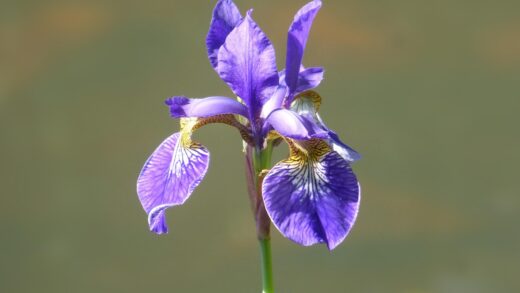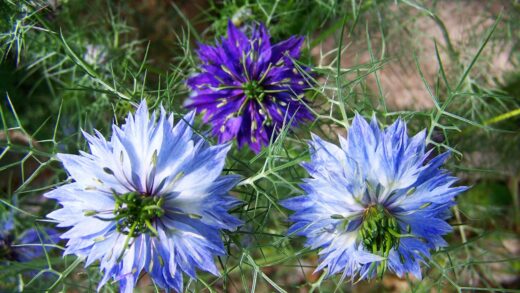Light is the fundamental source of energy for all plants, and for Algerian ivy, providing the correct intensity and duration of light is one of the most critical aspects of its care. While it has earned a reputation for being tolerant of a wide range of lighting situations, its growth, health, and appearance are directly influenced by the quality of light it receives. Understanding its ideal light preferences allows you to position the plant in a location where it will not just survive, but truly flourish, displaying its most vibrant foliage and robust growth habit.
Algerian ivy thrives best in conditions that mimic its native habitat, where it often grows as a ground cover or scrambles up trees in wooded areas. This environment is characterized by dappled sunlight or partial shade, where the plant is shielded from the harsh, direct rays of the sun. Replicating these conditions of bright, indirect light is the key to cultivating a supremely healthy specimen, whether you are growing it indoors as a houseplant or outdoors in your garden.
The plant’s appearance can be a clear indicator of whether its lighting needs are being met. An ivy receiving an optimal amount of light will have lush, densely spaced leaves with rich coloration. In contrast, an ivy struggling with either too much or too little light will exhibit tell-tale signs of stress, such as scorched leaves, sparse growth, or a loss of variegation. Learning to interpret these visual cues is an essential skill for any plant owner.
This article will offer a detailed examination of the specific light requirements for Algerian ivy. We will explore what constitutes ideal lighting, the visible effects of both insufficient and excessive light, and how to adapt care for the different light needs of solid green versus variegated varieties. By applying this professional knowledge, you can ensure your plant is perfectly placed to receive the energy it needs for spectacular growth.
Ideal light: Bright and indirect
The gold standard for Algerian ivy is bright, indirect light. This term describes a location that is well-lit for most of the day but does not receive the direct, intense rays of the sun. Indoors, this is often found near an east-facing window, which receives gentle morning sun, or a few feet away from a west or south-facing window, where the light is bright but not direct. A spot where the plant can “see” a wide view of the sky without being in the sun’s direct path is perfect.
More articles on this topic
This type of lighting provides the perfect amount of energy for the plant to conduct photosynthesis efficiently without the risk of cellular damage. In these conditions, the ivy will produce strong stems, large leaves, and maintain a compact, full appearance. For those with variegated cultivars, which have cream, white, or yellow markings on their leaves, bright indirect light is especially important. It provides enough energy to support the non-pigmented parts of the leaves, ensuring their beautiful patterns remain sharp and distinct.
Outdoors, the ideal location is one that offers partial or dappled shade. This is often found beneath the canopy of tall trees, where the leaves filter the sunlight, creating a mosaic of light and shadow on the ground below. Planting on the north or east side of a house or other structure can also provide this type of protection from the intense midday and afternoon sun, which are the most damaging. These locations provide the bright ambiance the ivy loves without the stress of direct solar radiation.
It is important to remember that light intensity changes throughout the day and with the seasons. A location that is perfect in the winter, when the sun is lower in the sky and less intense, might become too sunny in the summer. Periodically assessing the light in your chosen spot and being willing to move your plant if necessary is a key part of responsive and effective plant care. Observation is your best tool for ensuring your ivy remains in its optimal lighting environment.
The effects of insufficient light
While Algerian ivy is known for its ability to tolerate low-light conditions, this tolerance has its limits, and a lack of adequate light will have noticeable negative effects on the plant’s health and appearance. The most common symptom of insufficient light is etiolation. This is where the plant’s stems become unnaturally long and thin, and the space between the leaves, known as the internodal distance, increases. The plant is essentially stretching itself out in search of more light.
More articles on this topic
In low light, the overall growth of the plant will slow down considerably. The leaves it produces may be smaller than normal and may appear a dull, lackluster green. For variegated varieties, the effect is even more pronounced. Because the white or yellow parts of the leaves lack chlorophyll, they cannot photosynthesize. To compensate for the lack of light, the plant will produce more chlorophyll, causing the variegated sections to shrink or disappear entirely as the leaves revert to solid green. This is a survival mechanism to maximize the plant’s energy-producing capacity.
An ivy that is chronically light-deprived may also be more susceptible to other problems, such as overwatering and fungal diseases. Because the plant is not growing actively, it uses water much more slowly, which increases the risk of the soil remaining waterlogged. The combination of low light and damp conditions creates a perfect environment for fungal pathogens to thrive. The plant may also become weaker and less resilient, making it more vulnerable to pest infestations.
If you notice these symptoms, the solution is to move your ivy to a location with more light. The change will not reverse the etiolation of existing stems, but it will encourage new growth to be more compact and healthy. You can prune back the leggy stems to stimulate bushier growth once the plant is in its new, brighter location. Gradually acclimate the plant to its new spot over a week or so to avoid the shock of a sudden, drastic change in light intensity.
The dangers of excessive light
Just as too little light can be problematic, too much direct sunlight can be equally, if not more, damaging to Algerian ivy. The plant’s leaves are not adapted to withstand the intense heat and ultraviolet radiation of direct sun, especially during the afternoon hours. The most common result of excessive light exposure is leaf scorch. This appears as brown, dry, or crispy patches on the leaves, particularly in the areas most exposed to the sun. In severe cases, entire leaves may turn yellow or brown and fall off.
The vibrant green color of the leaves can also become faded or washed-out in conditions of overly intense light. The plant may take on a bleached, yellowish appearance as the chlorophyll in the leaves begins to break down faster than it can be produced. This not only affects the plant’s aesthetic appeal but also impairs its ability to photosynthesize effectively, leading to a general decline in its health and vigor.
A plant stressed by too much sun will also require significantly more water, as moisture evaporates from the soil and transpires from the leaves at a much faster rate. This can lead to a cycle of wilting and recovery that puts a great deal of stress on the plant. If the plant is unable to draw up water fast enough to keep up with the rate of moisture loss, it can become severely dehydrated, leading to widespread browning and dieback of the foliage.
If you see signs of leaf scorch or fading, you must immediately move your plant to a shadier location. If moving a large outdoor plant is not feasible, consider providing some form of artificial shade, such as a shade cloth, or planting taller companion plants nearby to help filter the sun. It is important to remember that while Algerian ivy is tough, its preference is for the gentle, filtered light of a woodland setting, not the harsh exposure of an open, sun-baked field.


















